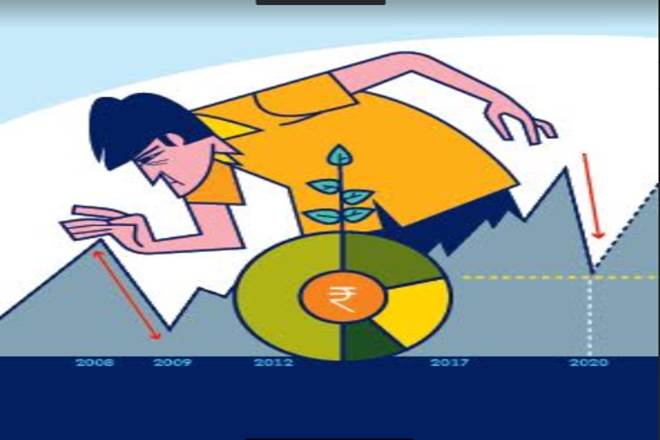As the Sensex has slipped over 8000 points since January 1, investors fear further downward movements. Those who started investing in 2009 or after 2014 or even after 2018 have not witnessed such deep corrections. Knee-jerk reactions in such a situation is the last thing an investor should do.
Investing is a journey, risk is uncertain and risk comes unannounced. The recent events have shown the mirror of risk. There are controllable (asset allocation) risk, uncontrollable (market events) risk, systematic (inherent risk as in market volatility) and unsystematic risk (specific to the company or industry such as what happened with Yes Bank). But nothing prepares one for the events that has happened in this fortnight.
Learn from data points
One thing is certain that decisions are made in real-time based on the data currently available. We should look at the data points from the 2008 and early 2009 downturns and the subsequent recovery which happened in mid 2009. Also look at data points in 2011, 2014 and 2017.
In the investing journey, one must have a process in place. Events and sudden direction change in the markets should not make you jittery. What is the mantra then? Discipline is the key in investing. The financial markets are not the place to punt, it is the place to make one’s wealth grow and have cash flow plans in place, even as events unfold in which as an investor, you do not have control.
A sharp fall in equity prices (as observed this week) and a sharp rise (as recently as in the week of September 20 last year) cannot be foreseen. In hindsight, it is easy to talk about what should be done.
The three-bucket strategy
Any money which you need for 0-3 years must never be invested in volatile or risk instruments such as equity or long-term bonds. You need cashflow and also need capital to be protected. Also, this is the place where you are parking the money temporarily too, for future asset allocation.
One can consider hybrid funds, typically Balanced Advantage Funds if the investments are for a period exceeding three years and up to five to seven years. One can also consider large cap equity funds in this bucket. We save and invest for the long-term, and one needs to have the patience in this journey. A sharp fall or a sharp rise in equity prices has to be accepted with the same equanimity. And with a horizon of over five to seven years, investors should consider small or midcap equity investment.
Along with this three-bucket process, have an Investment Policy Statement, which can guide you to take decisions when market events make us indecisive or leaves us confused. To time the market, one needs luck. But to create wealth, one needs to have a process, a method and most importantly, patience.
The writer is managing partner, BellWether Advisors LLP


